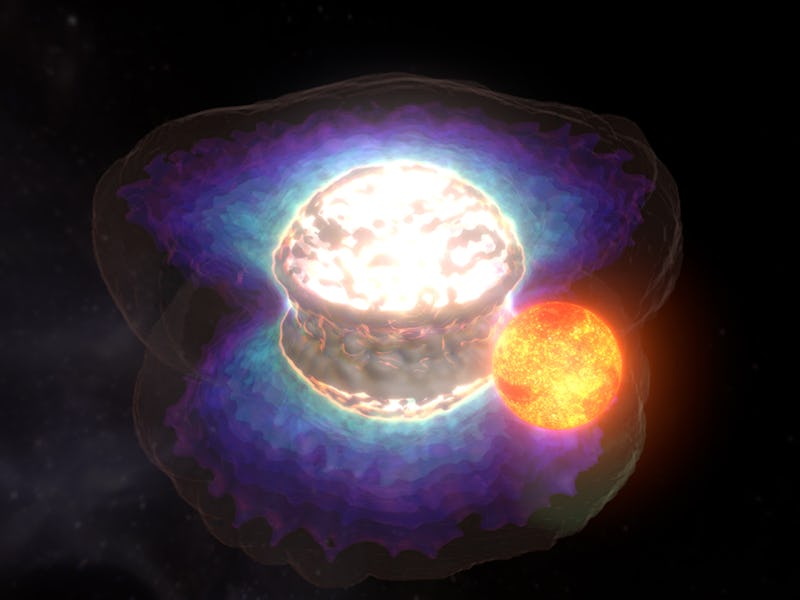Incredible NASA visualizations reveal universe as you have never seen it before
NASA's Chandra X-Ray Observatory is altering our perspective on the cosmos — and it is beautiful.

Prepare to get a new perspective on the cosmos.
For as long as humans have peered into space, we have been forced to observe the beauty of the universe via flat, two-dimensional imaging techniques. As a result, certain details — the sheer size, the dynamism, and the true nature — of interstellar objects and phenomena have been somewhat obscured.
But NASA's Chandra X-ray Observatory is changing that. In a new collection of 3D visualizations, scientists from the observatory have brought some of the wonders of the cosmos to life, allowing us here on Earth to marvel at such incredible events as powerful supernovae explosions and jets of stellar material erupting in space.
The collection was created by a team at the National Institute for Astrophysics in Italy using data collected by Chandra and other X-ray observatories. The team used a computer simulation to model the geometry, velocity, and other physical properties of each of the phenomena.
The result is 32 stunning models that shed new light on some of the most chaotic and beautiful events in space — from the birth of a star, to the outburst of hot plasma from the Sun's surface. Together, they are a testament to the power of these interstellar events.
Here are three of our favorites.
3. A nova explodes
A nova is a kind of thermonuclear explosion that happens on the surface of a white dwarf star. A white dwarf star in a binary system with a red dwarf companion pulls material in from that other star, becoming increasingly bright before the explosion.
The nova this visualization captures took place on January 28, 2010 — scientists reported on it at the time in a paper published on aRXiv. The visualization shows the first 18 hours after the last outburst from the nova, which is located in the constellation Scorpio. The star system erupts about once every decade, so astronomers may see another nova burst forth from it in the next year.
2. Stellar jets burst
As material falls into a young star, it shoots jets of stellar material out from its magnetic poles. This 3D model captures that in action, pulling in data from two young stars observed by Chandra.
The simulation shows a critical and chaotic phase in the development of a star, and how the stellar body comes into its own. One of the stars in the simulation, DG Tau, is located 450 light years away from Earth. Scientists reported on the jets in a paper published in 2018 on aRXiv.
1. Burning supernova remains
Tycho's supernova remanent is an object made up of the leftovers of a supernova that occurred in 1572, after a white dwarf star ended its life in a massive explosion. It is named after the 16th century Danish astronomer, Tycho Brahe, who described it at the time.
The 3D simulation model not only pictures the outside shell of the explosive remains, but also shows the internal mechanics of that stellar burst. It takes the viewer through 1,000 years of Tycho's lifetime — projecting far beyond its current 447-year-old self.
When some stars explode, they leave behind a neutron star or a black hole. But this one, sadly, left nothing in its legacy.
Want to see more?
You can interact with all of the 3D models from Chandra here.